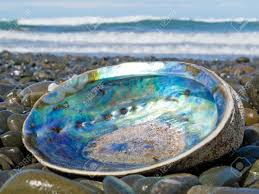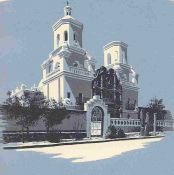Book Summary, Author Note and Biography
Chapter 15
Padre Kino and the Trail to the Pacific Online
Book Summary
Inside Cover
Father Eusebio Francisco Kino, mapmaker, geographer and explorer, went to Mexico in 1680 with the hope that he would be sent on to China as a missionary. Instead, he was assigned to the Indians of Lower California, a region then thought to be an island. After winning over the natives, he was forced to leave the post because of the difficulty In transporting supplies across the stormy Sea of California.
Afterward, as a missionary on horseback to the Indians of the American Southwest, Kino worked ceaselessly to build up the settlements where his charges could live in peace and plenty. He fought tirelessly against men of power and position who wished to enslave the Indians in the mines, and as long as he lived, they were protected.
Busy as he was, Padre Kino never forgot the Indians of Lower California. He built up great herds of stock against the day when he could supply new missions there. Toward this end, and disbelieving that the area was an island, he embarked on many explorations until he finally discovered a land passage from the mainland. The humble padre realized his fondest dream when the Missions in Lower California were re-established.
Alice Jacqueline Steffan
"Jack Steffan"
About The Author
Jack Steffan is the penname of a writer born on a reservation of the Nez Perces tribe in Idaho, where her Scotch Irish father bought a homestead and leased Indian land.Educated in public schools, she graduated as a music major from the University of Idaho. She has lived most of her life in the Far West—Idaho, Washington, Oregon, Nevada, Arizona, and California. However, she has spent the last seven years in Washington, D. C, where she resides with her husband, an attorney, and is able, now that her three children are grown, to devote time to research and writing. An earlier book, Mountain on Fire, was published in 1959.
A convert to Catholicism, Jack Steffan has long been interested in the early history of the West and especially in the lives of the Jesuit and Franciscan missionary-explorers. A visit to the mission of San Xavier del Bac, near Tucson, Arizona, led to her search for information about its founder, Padre Kino.
|180|
|181|
Author's Note
I should like to express here my deep gratitude to the people who helped so much in the preparation of this book.
Mr. and Mrs. Charles J. Farrington, of Tucson, Arizona, gave me my first glimpse of the beautiful mission church of San Xavier, founded by Padre Kino in 1700.
Mother M. Sessions, librarian at Stone Ridge, Country Day School of the Sacred Heart in Bethesda, Maryland, introduced me to Herbert Bolton's definitive works on Padre Kino and graciously allowed me to consult them whenever I wished.
Mother Sessions also directed me to the Academy of American Franciscan History, of Washington, D. C., where Reverend Finbar Kenneally, O.F.M., Ed.D., from the first gave his enthusiastic encouragement and was always willing to share his wide knowledge of the missionary period and the geographical area in which Kino worked. Reverend Matthias Kiemen, O.F.M., Ph.D., also of the Academy, gave generously of his time in clearing up some knotty problems concerning the relationship between the missionary fathers and the laity of Kino's day.
The staff at the library of the Pan American Union, Washington, D. C., gave courteous and invaluable aid in the selection of the many books made available to me from their fine historical collection. Miss Barbara Nolen, of the staff of George Washington |182| University, Washington, did much initial careful editing, and this was ably concluded by Miss Julie Kernan, of P. J. Kenedy and Sons, who had furnished the initial inspiration for the book.
And finally, Miss Pauline M. Papieck gave much needed and skillful help in the typing of the manuscript. To each and every one of them, my most grateful thanks.
The Author
Washington, D. C.
March 4, 1960

